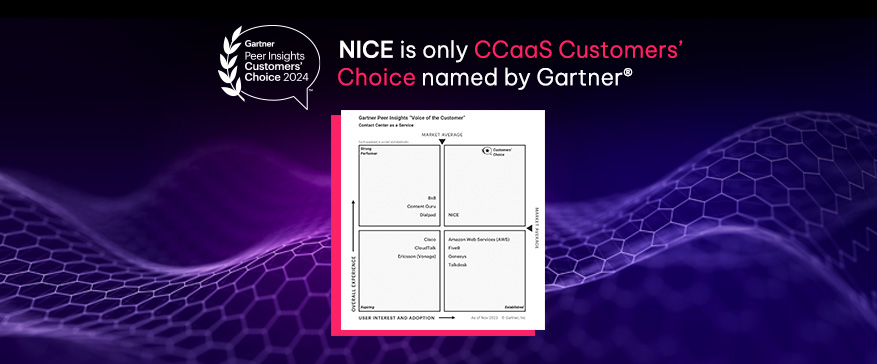What is Feedback Management?
Customer feedback management is a pivotal process for businesses aiming to efficiently collect, analyze, and act upon customer feedback. This systematic approach allows companies to gather both positive and negative feedback, and utilize it to enhance products, services, and overall customer satisfaction. By implementing a robust feedback management system, businesses gain valuable insights into customer preferences, identify areas for improvement, and make data-driven decisions.
In this article, we will delve into the significance of feedback management, the essential components involved, best practices for effective implementation, selecting the right feedback management tool, integrating it with CRM systems, and how feedback management promotes continuous improvement.
Why is Customer Feedback Management Important
Feedback management is essential for businesses of all sizes. It involves collecting, analyzing, and taking action on customer feedback to refine products, services, and the overall customer experience. Effective customer feedback management is important for driving product improvements, revenue growth, and customer satisfaction. Here are the key reasons why the customer feedback management process is critical:
The benefits of effective feedback management:
Enhanced customer satisfaction: By actively gathering and addressing feedback, businesses can resolve customer pain points, leading to higher satisfaction levels.
Improved product development: Feedback provides valuable insights into customer needs and preferences, enabling businesses to develop products and services that better meet customer expectations.
Increased customer loyalty: When customers feel heard and their feedback is acted upon, they are more likely to become loyal advocates for the business, promoting repeat business and positive word-of-mouth.
How feedback management contributes to business growth:
- Identifying areas for improvement: Feedback management enables businesses to pinpoint areas needing enhancement in their products, services, or internal processes.
- Staying ahead of the competition: By actively listening to customer feedback, businesses can stay ahead of their competitors by continually evolving and meeting changing customer expectations.
- Building a strong brand reputation: Effective feedback management shows a business’s commitment to customer satisfaction, helping to build a strong brand reputation in the market.
Examples of companies that have successfully implemented feedback management:
- Amazon: Known for its customer-centric approach, Amazon has implemented a robust feedback management system that allows customers to provide reviews and ratings on products, ensuring transparency and accountability.
- Airbnb: Airbnb actively encourages guests to leave feedback after their stays. This feedback helps hosts improve their listings and ensures a better experience for future guests.
- Apple: Apple has a dedicated feedback portal where customers can submit suggestions, report issues, and provide feedback on their products and services. This feedback helps Apple improve their offerings and address customer concerns.
In conclusion, feedback management is vital for businesses to thrive in today’s competitive market. By effectively managing feedback, businesses can enhance customer satisfaction, drive business growth, and build a strong brand reputation.
Key Elements of Analyzing Customer Feedback
Feedback management is a critical process that allows businesses to gather insights from their customers and make informed decisions to improve their products and services. In this section, we will explore three key elements of feedback management: collecting and analyzing customer feedback, implementing feedback loops for continuous improvement, and leveraging feedback to enhance product development.
Collecting and analyzing customer feedback: Gathering feedback from customers is the first step towards effective feedback management. By utilizing various channels such as surveys, online reviews, and social media listening, businesses can collect customer feedback and gain valuable insights about their customers’ experiences and preferences. Once collected, this feedback needs to be carefully analyzed to identify patterns, trends, and areas for improvement.
Implementing feedback loops for continuous improvement: Feedback loops are essential for businesses to continuously improve their products and services based on customer feedback. By establishing a systematic process to collect, analyze, and act upon feedback, businesses can identify areas of improvement, address customer pain points, and enhance their overall customer experience. This iterative approach, known as the customer feedback loop, ensures that businesses stay responsive to their customers’ needs and preferences.
Leveraging user feedback to enhance product development: User feedback provides valuable insights that can drive product development and innovation. By actively listening to customer feedback, businesses can identify new features, functionalities, or improvements that align with their customers’ expectations. This customer-centric approach not only helps in creating products that meet market demands but also builds stronger relationships with customers by demonstrating that their feedback is valued and acted upon.
At NICE, we understand the importance of feedback management and offer comprehensive solutions to help businesses effectively collect, analyze, and leverage customer feedback. Our platform provides robust tools and analytics that enable businesses to optimize their feedback management processes and drive continuous improvement.
Best Practices for Feedback Management
Creating a feedback-friendly culture within the organization is crucial for effective feedback management. This involves fostering an environment where employees are encouraged to give and receive feedback openly and constructively. By promoting a culture that values feedback, organizations can harness the power of collective insights to drive continuous improvement.
One way to encourage feedback is by actively engaging with customers. Providing multiple channels for customers to share their feedback, such as online surveys, social media platforms, or customer support helplines, can help organizations gather feedback and valuable insights. It’s important to actively listen to customer feedback, respond promptly, and acknowledge their contributions. This not only encourages more customers to provide feedback but also enhances customer loyalty and satisfaction.
Setting up a systematic process for managing feedback is essential to ensure that feedback is effectively captured, analyzed, and acted upon. Organizations can implement feedback management software or tools that streamline the feedback collection, categorization, and analysis process. This enables organizations to identify patterns, trends, and areas for improvement based on the feedback received. Additionally, having a structured process in place ensures that feedback is not overlooked or ignored, and appropriate actions are taken to address customer concerns.
Choosing the Right Customer Feedback Management Tool
When it comes to managing feedback effectively, having the right customer feedback management tool in place can make all the difference. With numerous options available in the market, it’s important to consider certain factors before making a decision. Here are some key factors to consider when selecting a feedback management tool:
User-Friendliness: A user-friendly interface is crucial for seamless adoption and ease of use across your team. Look for a tool that offers intuitive navigation, simple workflows, and a visually appealing design.
Customizability: Every organization has unique feedback management needs. Ensure that the tool allows you to customize the feedback forms, rating scales, and other elements according to your specific requirements.
Integration Capabilities: To streamline your feedback management process, it’s essential that the tool integrates smoothly with your existing systems such as CRM, helpdesk, or project management software.
Different customer feedback management tools offer various features and benefits, such as linking feedback to discussions, prioritizing feedback for the product roadmap, and taking internal and external actions based on the feedback received.
Now, let’s take a look at some popular feedback management software:
- Feedbackly: This comprehensive feedback management tool offers features like feedback collection, analysis, and reporting. It provides real-time insights to help you make data-driven decisions.
- SurveyMonkey: Known for its user-friendly interface, SurveyMonkey enables you to create and distribute surveys effortlessly. With advanced reporting and analysis capabilities, it helps you gain valuable insights from customer feedback.
- NiceFeedback: Our very own feedback management tool, NiceFeedback, is designed to help businesses effectively collect, manage, and analyze customer feedback. With its customizable features and seamless integration options, it provides a holistic solution for feedback management.
When evaluating and comparing different feedback management tools, keep these factors in mind:
- Features: Assess the features offered by each tool and determine if they align with your specific needs and goals.
- Pricing: Compare the pricing plans of different tools to ensure it fits within your budget. Consider the value provided by each tool in relation to its cost.
- User Reviews: Research user reviews and ratings to gain insights into the user experience and overall satisfaction with the tool.
By carefully considering these factors and evaluating different feedback management tools, you can choose the one that best suits your organization’s requirements and helps you effectively leverage customer feedback.
Integration of Feedback Management with CRM
Integrating a customer feedback management system with customer relationship management (CRM) systems can provide numerous benefits for businesses. By combining these two powerful tools, organizations can gain valuable insights into customer preferences, enhance customer experience, and drive business growth.
One of the key benefits of integrating feedback management with CRM systems is the ability to centralize and consolidate customer data. Feedback data, such as surveys, reviews, and customer ratings, can be seamlessly integrated into CRM platforms, allowing businesses to have a comprehensive view of their customers. This holistic view enables businesses to better understand customer needs, preferences, and pain points, leading to more targeted marketing strategies and personalized customer interactions.
Another advantage of integrating feedback management with CRM systems is the ability to automate processes and workflows. By leveraging CRM functionalities, businesses can automate the collection, analysis, and response to customer feedback. This automation streamlines the feedback management process, saving time and resources while ensuring prompt and efficient customer service.
Successful integration of feedback management with CRM can be achieved through various strategies. Firstly, businesses need to select a CRM system that supports seamless integration with feedback management tools. This ensures that feedback data can be easily imported, analyzed, and linked to customer profiles within the CRM platform.
Furthermore, businesses should establish clear data management protocols to ensure the accuracy and reliability of feedback data. This includes defining data fields, mapping data sources, and implementing data validation processes to eliminate duplicates and inconsistencies.
Lastly, businesses should leverage the power of analytics and reporting features within CRM systems to gain actionable insights from feedback data. By analyzing feedback trends, sentiment, and customer satisfaction scores, businesses can identify areas for improvement, track the success of their initiatives, and make data-driven decisions to enhance overall customer experience.
Several organizations have successfully integrated feedback management with CRM systems to drive customer engagement and loyalty. For example, a leading e-commerce company integrated customer feedback from product reviews and ratings into their CRM platform. This integration allowed them to personalize product recommendations based on customer preferences, resulting in increased customer satisfaction and repeat purchases.
In conclusion, integrating feedback management with CRM systems offers significant benefits for businesses. From gaining a holistic view of customers to automating processes and driving data-driven decisions, this integration can propel businesses towards success in today’s competitive landscape.
Continuous Improvement through Feedback Management
Feedback management is a critical process for organizations looking to achieve continuous improvement. By actively seeking and utilizing feedback, businesses can identify areas of improvement, implement action plans based on insights, and measure the impact on their overall performance. Collecting customer feedback throughout the product development process ensures that products remain user-centric and aligned with customer expectations.
Utilizing feedback to identify areas of improvement is essential for any organization striving to enhance its products, services, or processes. Feedback can come from various sources, such as customers, employees, or stakeholders. By collecting feedback through surveys, interviews, or online platforms, businesses can gain valuable insights into customer preferences, pain points, and areas for enhancement.
Once feedback is collected, it is important to manage customer feedback effectively to implement action plans based on the insights gathered. This involves analyzing the feedback received and identifying specific actions that can address the identified areas of improvement. For example, if customers consistently provide feedback about a particular product feature, businesses can prioritize efforts to enhance or modify that feature accordingly.
Measuring the impact of feedback management on business performance is essential to determine the effectiveness of the feedback process. By establishing key performance indicators (KPIs) related to customer satisfaction, product quality, or operational efficiency, businesses can track the outcomes resulting from feedback implementation. This allows organizations to assess the success of their continuous improvement efforts and make data-driven decisions.







